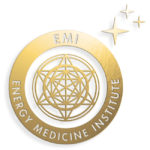Art, literature, and medical science declined as the Roman Empire disintegrated under the pressure of the invading tribes. The practice of healing fell to women at home and within the holy orders. A few holy women were canonized for their work. St Bridget practiced medicine and midwifery in Ireland and St Scholastica aided her brother St Benedict during the plague. As the medieval period progressed, the education of women in medicine suffered a decline as the early church stressed the inferiority of women.
In contrast, the school of medicine at Salerno, Italy, accepted women. The climate of tolerance in this city allowed influences from Arab, Jewish, Roman, and Greek cultures to coalesce intellectual achievements that included medical concepts that women contributed to. The best known woman on the faculty was Trotula, a magistra medicina, who wrote a book on obstetrics and gynaecology that was used for more than 400 years.
The Dark Era of Witch-Hunting: Suppressing Women’s Medical Knowledge and Healing Expertise
Witch-hunting swept through much of Europe as the Middle Ages waned. Because women were not allowed to study medicine, skill in healing was assumed to have been obtained from the devil. Spinsters, widows, and other women who refused to conform to the expectations of their low social status, including female healers and midwives, were frequent targets of witch-hunts.
During the witch-hunts, occurring from roughly the 13th to 18th centuries, women had been pushed out of the medical profession and lost access to formal medical education. In England and France, the passage of licensure laws and the formation of guilds in the 13th century further prohibited women from the practice of medicine. Even midwifery, previously a woman’s field, was dominated by men by the 17th century. Women were excluded from practicing in a professional capacity, though they continued to practice medicine in their homes.
